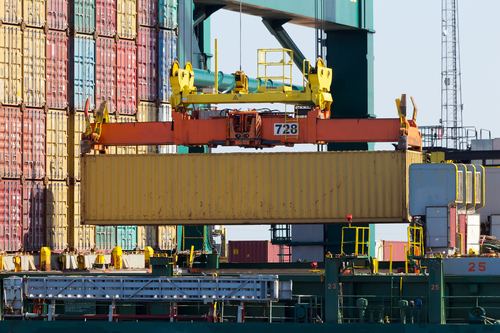
From 1st of July 2016 the will be a major change to the requirements (SOLAS Requirements) regarding the shipping of containers. This will affect all senders who ship their products using containers.
All senders must include a declaration of the verified gross weight of the container with their shipping documents.
This may cause senders some problems as the weight must be verified using devices which have calibration certifications.
The sender is also responsible for costs which arise in providing the signed declaration e.g. weighing costs.
Below is key information on regarding the changes to the SOLAS requirements:
1. Only containers with a Verified Gross Mass (VGM) are allowed to be loaded onto a Vessel.
There is no exception to this requirement.
It is a violation of SOLAS to load a packed container aboard a vessel to which SOLAS applies without a proper weight verification.
2. It is the responsibility of the sender to declare the VGM.
The sender (or by arrangement of the sender, a third party) has a responsibility to weigh the packed container or to weigh its contents. The declaration must be signed by a specific person representing the sender. This named and identified person confirms and verifies the accuracy of the weight calculation on behalf of the sender.
3. There are only two approved methods for calculating the VGM:
Method 1 – The container must be weighed after it has been packed.
Method 2 – which requires weighing all the cargo and contents of the container and adding those weights to the container’s Tare weight as indicated on the door end of the container.
It is worth nothing that method 2 is unsuitable and unworkable for certain types of cargo items (e.g., scrap metal, loose grain or other bulk cargo items). The reason is that they are not easily individually weighed when packed into a container.
4. Using an estimated or non verified weight to calculate the VGM is not allowed.
The party packing the container cannot use the weight somebody else has provided.
There is only one exception to this and it is as follows: “Individual, original sealed packages that have the accurate mass of the packages and cargo items clearly and permanently marked on their surfaces, do not need to be weighed again when they are packed into the container.
This does not permit estimating the cargo weight, but permits using accurate weights that have been clearly and permanently marked on individual, original sealed packages (e.g., flat screen TVs that have their weight (e.g. X kg.) marked by the manufacturer on the box containing the TV).”
5. All weighing equipment used must meet national certification and calibration requirements.
6. The packed container can be weighed at the Port or Marine Terminal.
Where there is no signed shipper weight for a container when it arrives at a marine terminal or port, then the container can be weighed at the port. If the port or marine terminal does not have equipment to weigh the container and provide a verified weight, alternative means must be found to obtain a verified container weight.
The sender will be responsible for any costs that arise (e.g. weighing costs, repacking and administrative costs). Regulatory penalties will be defined by the individual national legislation.
7. A carrier may rely on a senders signed weight verification to be accurate.
8. What happens if there is any discrepancy?
Any discrepancy between a verified gross mass of a packed container obtained prior to the container’s delivery to the port terminal facility and a verified gross mass of that container obtained by that port facility’s weighing of the container, will result in the container not being loaded on board the vessel.
9. Further Information
Further information is available on:
http://www.fiata.com/fileadmin/user_upload/documents/recent_views/MTI/Guideline_SOLAS.pdf
http://www.worldshipping.org/industry-issues/safety/cargo-weight

One Comment